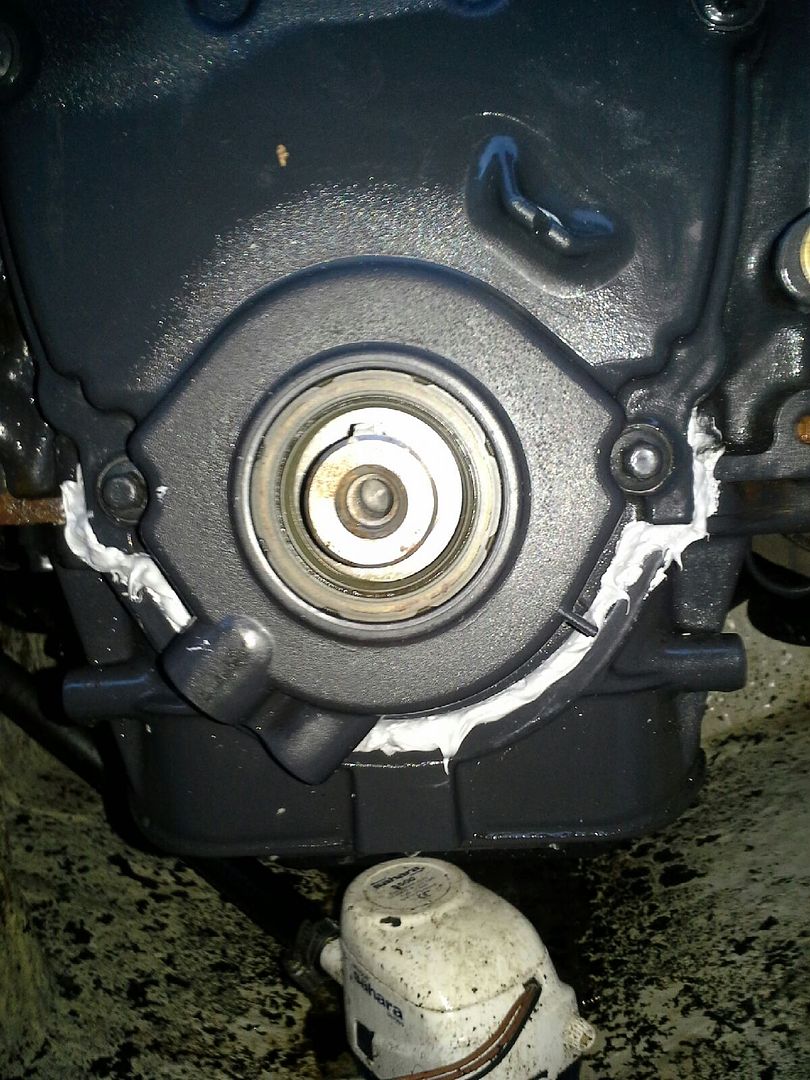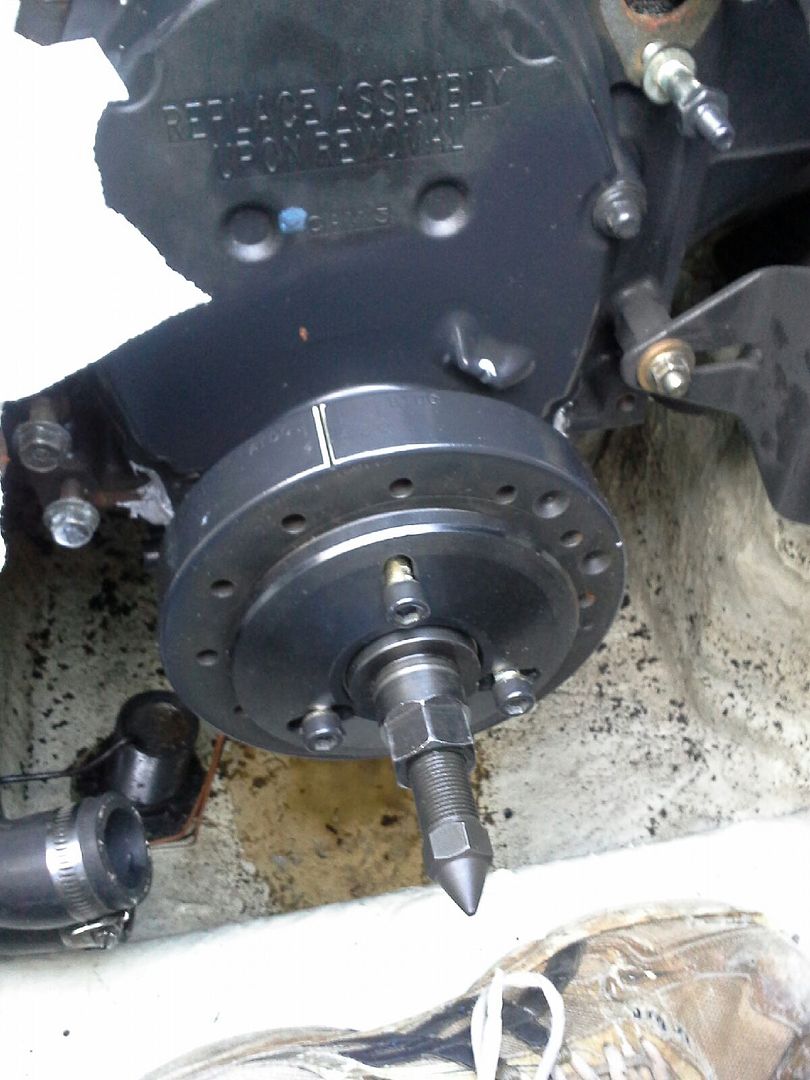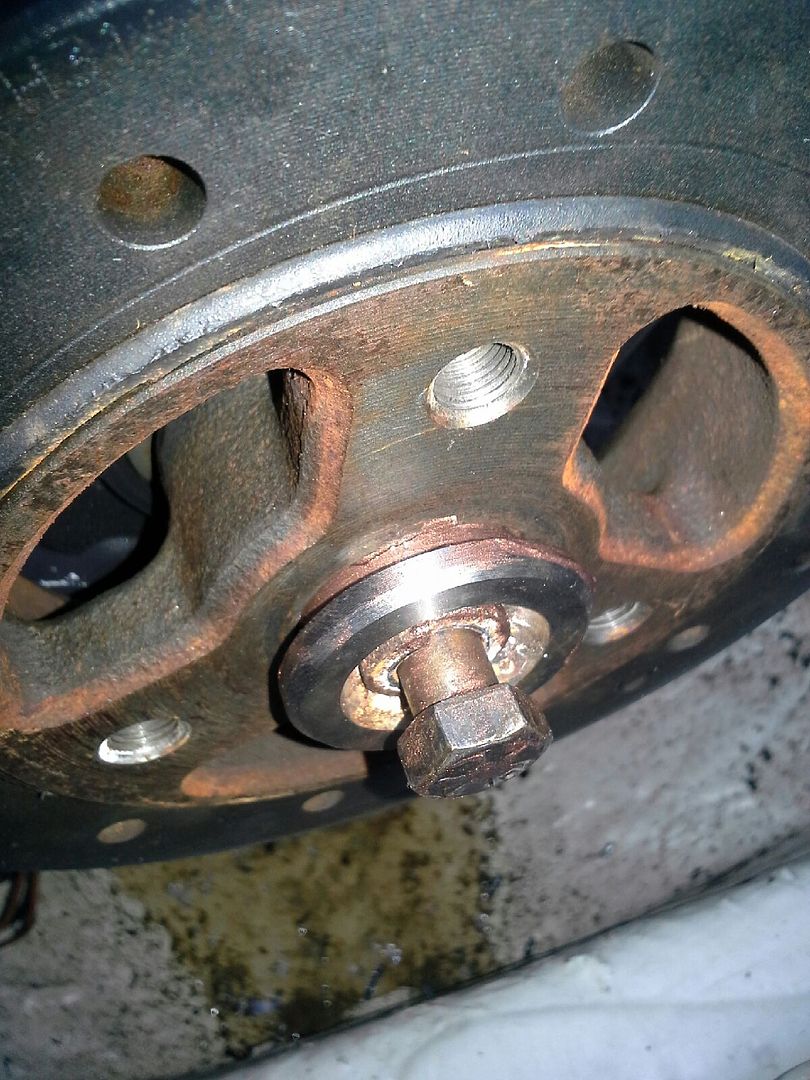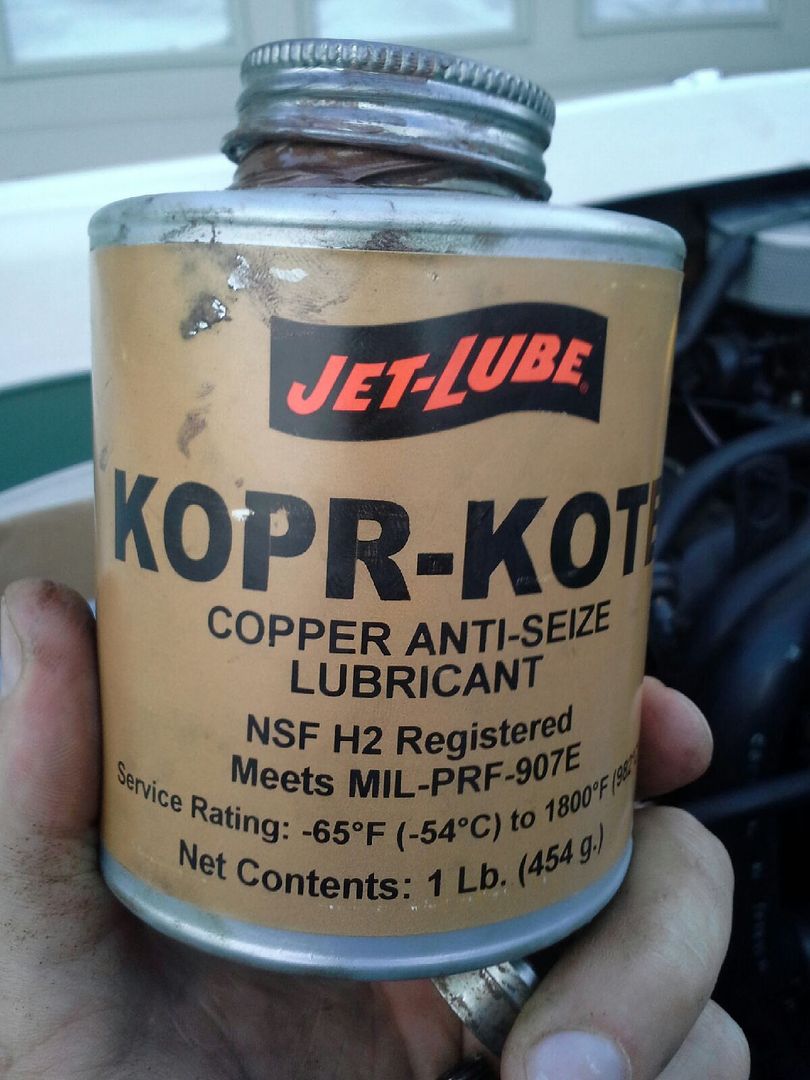Saline Marina
Petty Officer 2nd Class
- Joined
- Sep 9, 2014
- Messages
- 162
I thought I would put this thread in for reference, as the problem is basically fixed.
Just got this Four Winns 170 and started running it on the water muffs for testing and checking. Fast oil drip into the bilge directly under the crank nose, like a drop every 3 seconds at idle. Not the balancer oil seal as nothing's slinging around. In my defense, I didn't see this problem when lake testing the boat, so not sure if I got tricked by the seller with some kind of oil sock under the oil pan. I did not the dirty bilge but didn't seem super nasty. In any case its my problem now and I have to fix it.
In this engine, the front cover is composite (plastic) and its assembled onto the engine first, and then the oil pan goes on second. Which would be a nasty repair in the boat as you probably know. I debated between getting a new front cover, pulling the motor, putting it on a stand, taking pan off and put it all together clean and dry. I ordered a new front cover and gaskets to do this, as the front cover says something along the lines of "REPLACE ASM AFTER REMOVAL". I think I know why as a couple of the internal "corners" originally bonded by RTV chipped off. There is a curved channel on the bottom edge of the front cover which basically compresses the oil pan gasket underneath, and also acts as a piece of flashing to direct the cam-chain oil splash around the gasket.
However then I got to thinking that maybe if I used RTV I could work around this, and if I was wrong, I still had a plan with nothing damaged other than $6 out of my wallet for a tube of RTV and some time wrenching.
I cleaned up all of the surfaces in question to what I call "surgical clean" which means that one can wipe a paper towel across the surface and it come back white and dry, which involves a solvent like Brake Cleaner or I like to use CRC Natural Degreaser which smells like an orange. Lots of scraping old RTV off the old locations in detail fashion. I like the Grey RTV as its what's used in OEM applications, and I applied this to all the surfaces in question, carefully reinstalled the cover, torqued bolts, and let it sit for 24 hours. There's a fine line as too much RTV can lead to "drips" which separate and can float around and cause issues inside the engine, so I tried to ride that ridge. Looks a bit ugly but lets see what happens.
Before

After

Important detail, small bead of RTV must be placed over the crank key to keep this sealed. I duplicated this after a lot of scraping, wire brushing and solvent-cleaning the bore and keyway.

Special tool for removing and installing harmonic balancers, originally from Summit racing, have in toolbox from other engine projects.

Use of copper-based anti-seize for corrosion protection. Basically the bushing which locates the center axis of the lakewater pump was a little corroded into the harmonic balancer upon disassembly.

This is my favorite anti-seize for most outdoor apps. I use the grey nickel stuff for exhaust apps.

Held my breath and started the engine on the muffs again. No drips in 15 minutes of idle and part throttle operation and so I can breathe now! Quite happy with the result. Spent the next two nights with simple green cleaning out the bilge back to nice and clean again. I learned a lot about the engine and the water connections in the process, which I hope will help me to winterize.
Quite happy with the result. Spent the next two nights with simple green cleaning out the bilge back to nice and clean again. I learned a lot about the engine and the water connections in the process, which I hope will help me to winterize.
Just got this Four Winns 170 and started running it on the water muffs for testing and checking. Fast oil drip into the bilge directly under the crank nose, like a drop every 3 seconds at idle. Not the balancer oil seal as nothing's slinging around. In my defense, I didn't see this problem when lake testing the boat, so not sure if I got tricked by the seller with some kind of oil sock under the oil pan. I did not the dirty bilge but didn't seem super nasty. In any case its my problem now and I have to fix it.
In this engine, the front cover is composite (plastic) and its assembled onto the engine first, and then the oil pan goes on second. Which would be a nasty repair in the boat as you probably know. I debated between getting a new front cover, pulling the motor, putting it on a stand, taking pan off and put it all together clean and dry. I ordered a new front cover and gaskets to do this, as the front cover says something along the lines of "REPLACE ASM AFTER REMOVAL". I think I know why as a couple of the internal "corners" originally bonded by RTV chipped off. There is a curved channel on the bottom edge of the front cover which basically compresses the oil pan gasket underneath, and also acts as a piece of flashing to direct the cam-chain oil splash around the gasket.
However then I got to thinking that maybe if I used RTV I could work around this, and if I was wrong, I still had a plan with nothing damaged other than $6 out of my wallet for a tube of RTV and some time wrenching.
I cleaned up all of the surfaces in question to what I call "surgical clean" which means that one can wipe a paper towel across the surface and it come back white and dry, which involves a solvent like Brake Cleaner or I like to use CRC Natural Degreaser which smells like an orange. Lots of scraping old RTV off the old locations in detail fashion. I like the Grey RTV as its what's used in OEM applications, and I applied this to all the surfaces in question, carefully reinstalled the cover, torqued bolts, and let it sit for 24 hours. There's a fine line as too much RTV can lead to "drips" which separate and can float around and cause issues inside the engine, so I tried to ride that ridge. Looks a bit ugly but lets see what happens.
Before

After

Important detail, small bead of RTV must be placed over the crank key to keep this sealed. I duplicated this after a lot of scraping, wire brushing and solvent-cleaning the bore and keyway.

Special tool for removing and installing harmonic balancers, originally from Summit racing, have in toolbox from other engine projects.

Use of copper-based anti-seize for corrosion protection. Basically the bushing which locates the center axis of the lakewater pump was a little corroded into the harmonic balancer upon disassembly.

This is my favorite anti-seize for most outdoor apps. I use the grey nickel stuff for exhaust apps.

Held my breath and started the engine on the muffs again. No drips in 15 minutes of idle and part throttle operation and so I can breathe now!
Last edited:



















